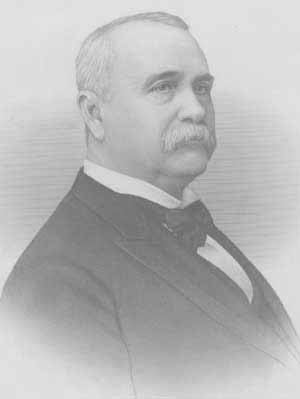Name Francis Drake Role American Politician | ||
 | ||
Died November 20, 1903, Centerville, Iowa, United States | ||
Francis Marion Drake (December 30, 1830 – November 20, 1903) was an American merchant, lawyer, banker and politician. He fought in the American Civil War and later became the 16th Governor of Iowa.
Biography
Drake was born in Rushville, Illinois, the son of John Adams Drake and Harriet Jane O'Neal. He later moved to Centerville, Iowa. He got a good business education, and became a merchant. He married Mary Jane Lord on December 24, 1855. They had seven children.
During the California Gold Rush, he led two expeditions across the plains from Iowa to California. The first one left in 1852. During that trip with ox teams, he encountered a band of 300 Pawnee, which he defeated with little loss to his band. The second trip in 1854 escorted a herd of cattle. Returning by ship after the second trip, he was wrecked off of Point Aquilla. Eight hundred passengers were killed.
During the American Civil War, he was commissioned as lieutenant colonel in August 1862 and was with the 36th Iowa Volunteer Infantry Regiment when it was mustered into service on October 4, 1862. After seeing his 1st military action with the 36th Iowas in a small skirmish at Shellmound, Mississippi, on July 4, 1863 he took part in a more sizable battle which featured combined forces of almost 12,000 men and over 200 dead at the so-called Battle of Helena. In the first half of April 1864 he and his regiment were active in the Battle of Elkin's Ferry, in the Battle of Prairie D'Ane and then in the April 15–23, 1864 occupation of Camden, Arkansas. To this point, F.M. Drake had only commanded his regiment throughout the Civil War; this now changed as he was asked to assume command of the 2nd Brigade, 3rd Division, 7th Corps of which his regiment was part. On Sunday, April 24, 1864, while on his first brigade command, he was severely wounded and captured while leading the smaller Union side to defeat during the Battle of Mark's Mills. Badly wounded, he was returned to the Union by the Confederates despite Ulysses S. Grant's recent April 17, 1864 ban on prisoner exchanges with the Confederates. Meanwhile, in the spirit of Grant's edict, most of his brigade was captured but sent to confinement at Camp Tyler, Texas where they will remain until March 1865. Upon recovering from his wounds, Drake had returned to U.S. Army action by June 1865 when he was Brevet Brigadier General, U.S. Volunteers, and - on June 11, 1865 - he assumed command of the 1st Brigade, 2nd Division, 7th Army Corps. He was finally mustered out of service later in 1865 as a U.S. Army Brigadier General, U.S. Volunteers; his old 36th Iowa Infantry Regiment - which was now part of his new command - was mustered out of service on August 24, 1865.
After the war, he practiced law for about six years as a criminal lawyer. Then for almost 30 years, he worked at banking and building and managing railroads. He was president of the Missouri, Iowa and Nebraska Railroad, the Indiana, Illinois and Iowa Railroad and the Albia and Centerville Railroad. He organized the Centerville National Bank, of which he was president until his death.
On July 17, 1895, he was nominated by the Republican Party for governor of Iowa. He was elected governor by an overwhelming majority on November 5, 1895, serving 1896 through 1898.
He founded and endowed Drake University in Des Moines, Iowa. It was named after him, and he served as president of the board of trustees. He also contributed to other colleges and gave to churches and missionary societies of many creeds. He died in Centerville, Iowa, in 1903, and is buried in Centerville’s Oakland Cemetery.
